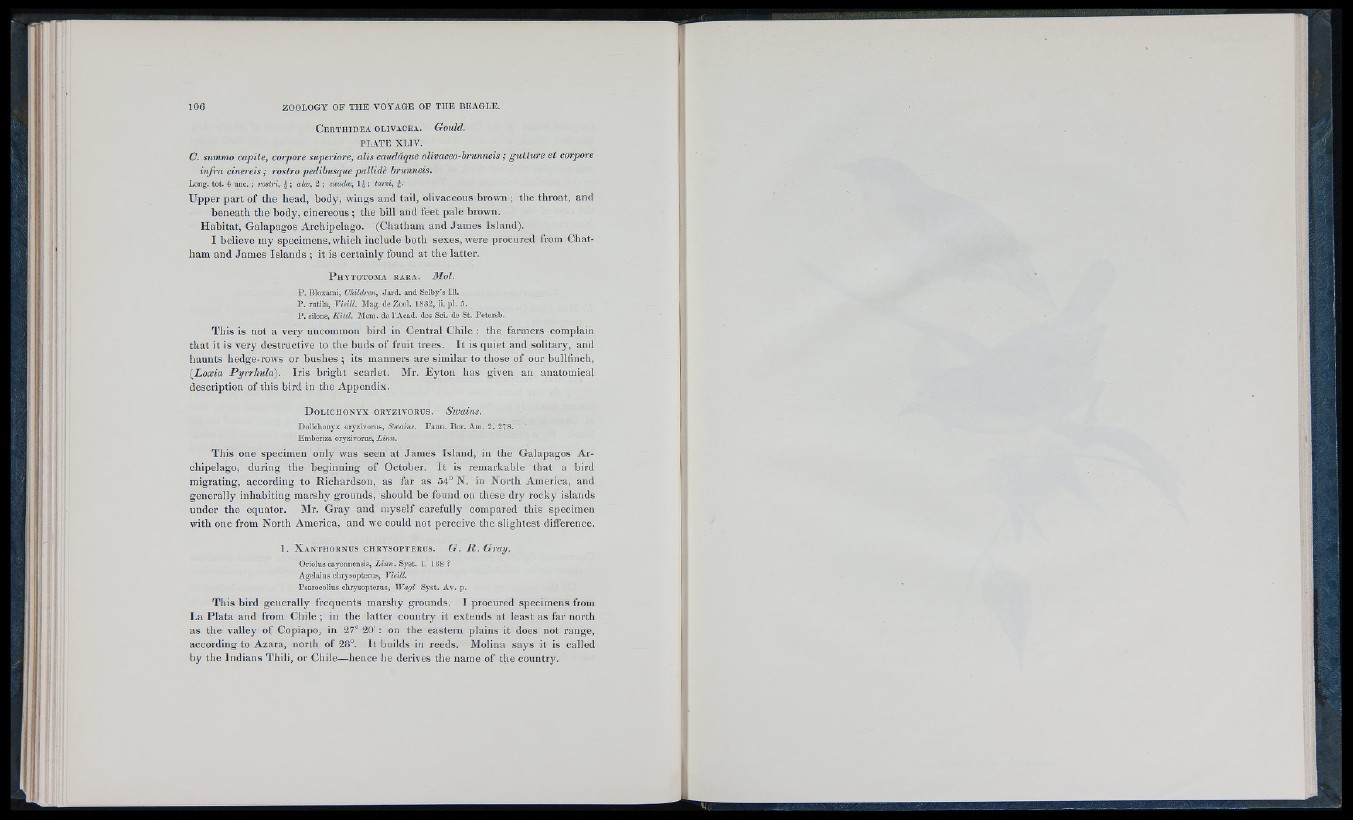
C e r t h i d e a o l i v á c e a . Gould,
PLATE XLIV.
C. summo capite, corpore superiore, alis caudâque olivaceo-hrunneis ; gutture et corpore
infra ciñereis; rostro pedibusque pallidè brunneis.
Long. tot. i unc. ; rostri, \ ; aloe, 2 ; caudæ, tarsi,
Upper part of the head, body, wings and tail, olivaceous brown ; the throat, and
beneath the body, cinereous ; the bill and feet pale brown.
Habitat, Galapagos Archipelago. (Chatham and James Island).
I believe my specimens, which include both sexes, were procured from Chatham
and James Islands ; it is certainly found at the latter.
P h y t o t o m a r a r a . 3Iol.
P. Bloxami, Children, Jard. and Selby’s 111.
P . rutila, Vieill. Mag. de Zool. 1832, ii. pi. 5.
P. silens, K ittl. Mom. de I’Acad. des Sci. de St. Petersb.
This is not a very uncommon bird in Central Chile : tlie farmers complain
that it is very destructive to the buds of fruit trees. It is quiet and solitary, and
haunts hedge-rows or bushes ; its manners are similar to those of our bullfinch,
{Loxia Pyrrhula). Iris bright scarlet. Mr. Eyton has given an anatomical
description of this bird in the Appendix.
D o l i c h o n y x ORYzivoRus. Swains.
Dolichonyx oryzivonis, Swains. Faun. Bor. Am. 2. 278.
Emberiza oryzivorus, Z inn.
This one specimen only was seen at James Island, in the Galapagos Archipelago,
during the beginning of October. It is remarkable that a bird
migrating, according to Richardson, as far as 54° N. in North America, and
generally inhabiting marshy grounds, should be found on these dry rocky islands
under the equator. Mr. Gray and myself carefully compared this specimen
with one from North America, and we could not perceive the slightest difference.
1 . X a n t h o r n u .s c h r y s o p t e r u s . G. R . Gray.
Oriolus cayeuncnsis, L in n . Syst. 1. 168 ?
Agelaius chrysopterus, Vieill.
Psarocolius chrysopterus, Wagl Syst. Av. p.
This bird generally frequents marshy grounds. I procured specimens from
La Plata and from Chile ; in the latter country it extends at least as far north
as the valley of Copiapo, in 27° 20' : on the eastern plains it does not range,
according to Azara, north of 28°. It builds in reeds. Molina says it is called
by the Indians Thili, or Chile—hence he derives the name of the country.